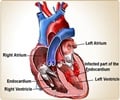Ceftazidime Medication Information
Learn everything you need to know about Ceftazidime-pronunciation, uses, dosage guidelines, indications, and when to take or avoid it.
Get up-to-date information on side effects, precautions, warnings, and proper storage to ensure safe usage.
Explore Ceftazidime brand names commonly used in India and internationally, along with detailed pricing information. Consult your healthcare provider for tailored medical advice.
Generic Name : Ceftazidime Pronunciation : sef-TAZ-i-deem ICD Code : Y40.1 Therapeutic Classification : AntibioticsBrand Names or Trade Names of Ceftazidime
India :
Magnazide (1g) |
SAFE - Z |
Cefazid® [Vial] |
Megazid (125 mg) |
Fortum |
Tazid |
Zydotum |
CEFAZID |
Tobracef (1000+120) |
N-Ciz Inj® [Inj]
International :
Ceptaz, Fortaz, Tazicef
Why is Ceftazidime Prescribed? (Indications)
This medication is a cephalosporin antibiotic, prescribed for certain types of bacterial infections. It works by killing sensitive bacteria.When should Ceftazidime not be taken? (Contraindications)
Hypersensitivity to cephalosporins (beta lactam antibiotics).What is the dosage of Ceftazidime?
Adult:IV/IM- The recommended dose is 1 to 6 gm in 3 divided doses. Child- 30mg/kg/day.How should Ceftazidime be taken?
It comes as a solution for injection, administered by a health care provider, into the vein or muscle.What are the warnings and precautions for Ceftazidime?
•Caution needed for patients with history of penicillin allergy; severe kidney problem; pregnancy, lactation.• Long-term or repeated use of this medication may cause a secondary infection.
• It only works against bacteria; it does not treat viral infections (eg, the common cold).
• Do not treat diarrhea without first checking with your doctor.
• Hormonal birth control (eg, birth control pills) may not work as well while you are using this medication.
What are the side effects of Ceftazidime?
Gastrointestinal- Nausea, vomiting, diarrhea, loss of appetite, abdominal pain or cramps, flatulence, colitis, including colon infection.Genitourinary- Pus in urine, kidney dysfunction, absence of urine, reversible interstitial inflammation of kidney, blood in urine, toxic kidney disease.
Blood- Increase in white blood cell, eosinophils and lymphocytes, decrease in nuetrophils, decreased platelet function, decreases red blood cells, insufficiency of new blood cells, bleeding.
Liver- Liver function impairment, jaundice, abnormal liver function test results.
Miscellaneous- Hypersensitivity, including Stevens-Johnson syndrome, erythema multiforme, toxic detachment of skin layers, overgrowth, serum sickness–like reactions (eg, skin rashes, joint pain, fever), inflammation of veins, and pain at injection site.
What are the other precautions for Ceftazidime?
It may reduce the ability of your blood to clot. Avoid activities that may cause bruising or injury.What are the storage conditions for Ceftazidime?
Injection: Store at 15-30°C. Usually handled and stored by a health care provider.Schedule : H
Prescription drugs - Drugs to be sold only under the prescription of a Registered Medical Practitioner.
 MEDINDIA
MEDINDIA
 Email
Email














